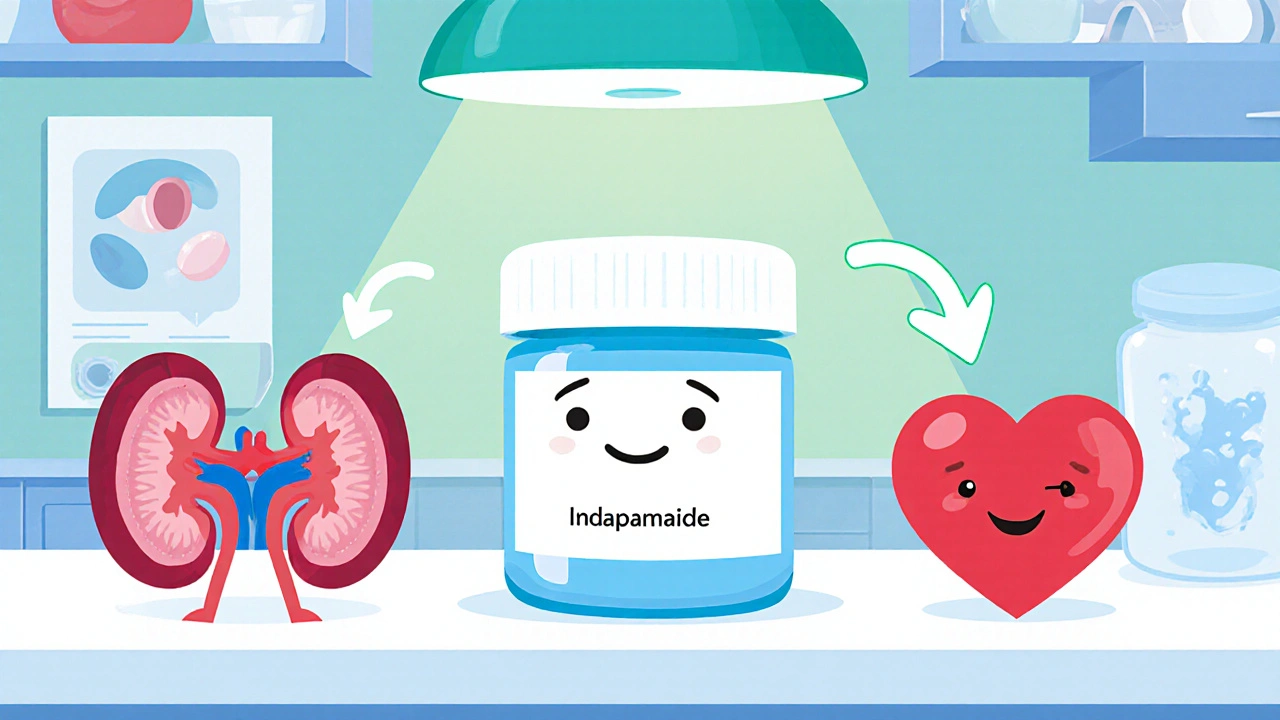When dealing with Indapamide adverse effects, the unwanted reactions that can occur while taking the diuretic indapamide. Also known as indapamide side effects, they range from mild electrolyte shifts to serious cardiovascular events. Understanding these reactions helps you catch problems early and talk to your doctor about adjustments.
Indapamide itself is a thiazide‑like diuretic, a class of drugs that increase urine output to lower blood pressure. Because it works by promoting sodium loss, the body often reacts with hypokalemia, a drop in potassium levels that can cause muscle cramps, fatigue, and heart rhythm issues. The drug is also prescribed for hypertension, high blood pressure that raises the risk of stroke and heart disease. Each of these entities influences the others: the diuretic effect leads to electrolyte changes, which in turn can aggravate blood pressure control.
Indapamide adverse effects show up in several patterns. The most common are increased urination, mild dizziness, and occasional headache – signs that the body is adjusting to lower fluid volume. Less frequent but still notable are metabolic shifts like elevated blood sugar, gout flare‑ups, and a rise in uric acid. Patients with pre‑existing kidney issues should watch for worsening renal function, because the drug’s filtration load can strain compromised kidneys.
First, keep an eye on electrolytes. Regular blood tests can catch low potassium (K⁺) or sodium (Na⁺) before symptoms spiral. Second, track blood pressure trends. While indapamide aims to reduce pressure, sudden drops can cause light‑headedness or fainting, especially after the first few doses. Third, be aware of rare but serious reactions like severe skin rashes, allergic responses, or liver enzyme elevations. If you notice any swelling, jaundice, or unexplained pain, seek medical advice right away.
Many patients wonder how indapamide stacks up against other diuretics. Compared to classic thiazides, indapamide tends to cause fewer metabolic side effects, but the risk of electrolyte imbalance remains. Combining it with potassium‑sparing agents (like spironolactone) or a low‑salt diet can blunt hypokalemia. However, adding another diuretic can amplify dehydration, so balance is crucial.
Another practical tip: stay hydrated, but avoid over‑drinking. A moderate fluid intake supports kidney function without undoing the drug’s blood‑pressure benefits. If you’re on a low‑sodium diet, monitor your potassium intake through foods like bananas, oranges, or leafy greens. Some clinicians recommend potassium supplements, but only under lab‑guided dosing.
Finally, remember that lifestyle factors intersect with medication effects. Regular exercise, stress management, and weight control all help keep blood pressure stable, which can reduce the dose needed for indapamide and, consequently, lower the chance of adverse effects. Keep a simple log of your symptoms, blood pressure readings, and any dietary changes – this data makes doctor visits more productive.
Armed with this overview, you’ll recognize the signs that merit a call to your healthcare provider and understand how the drug’s mechanisms tie into the broader picture of hypertension management. Below you’ll find a curated list of articles that dive deeper into each side effect, compare indapamide with other treatments, and offer actionable advice for staying safe while benefiting from its blood‑pressure‑lowering power.
Posted by
Paul Fletcher
9 Comments

Learn the full range of Indapamide side effects, from common to rare, how to manage them, and when to seek medical help.
read more